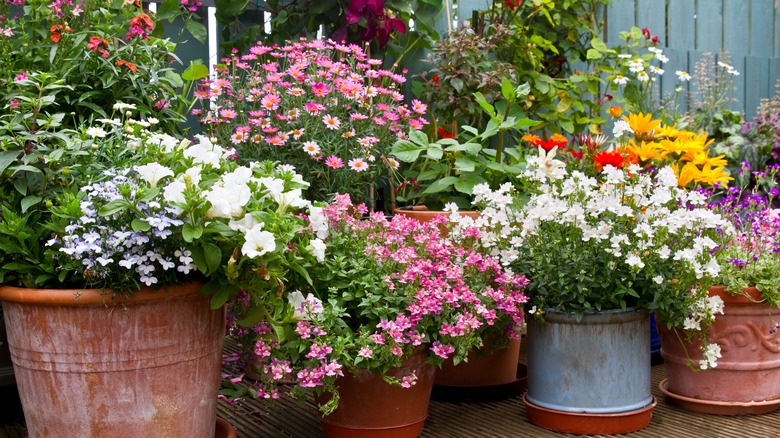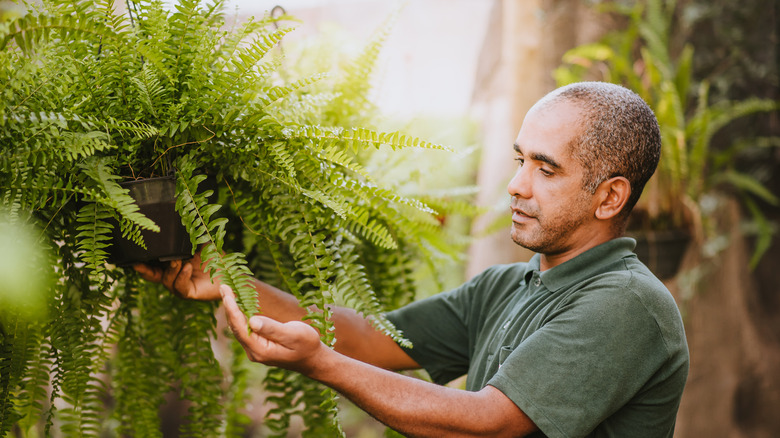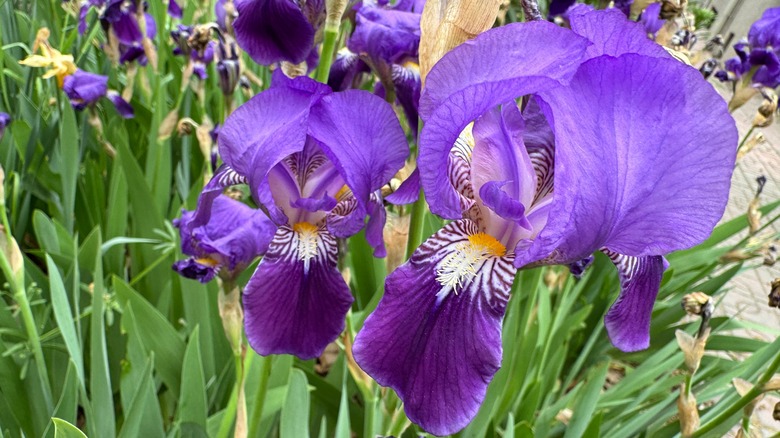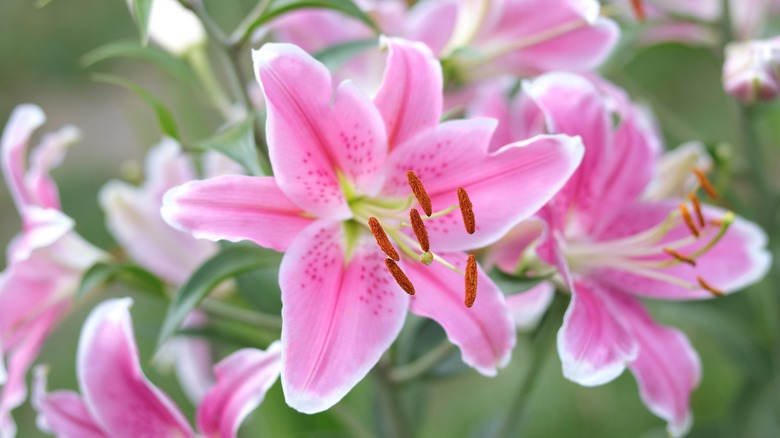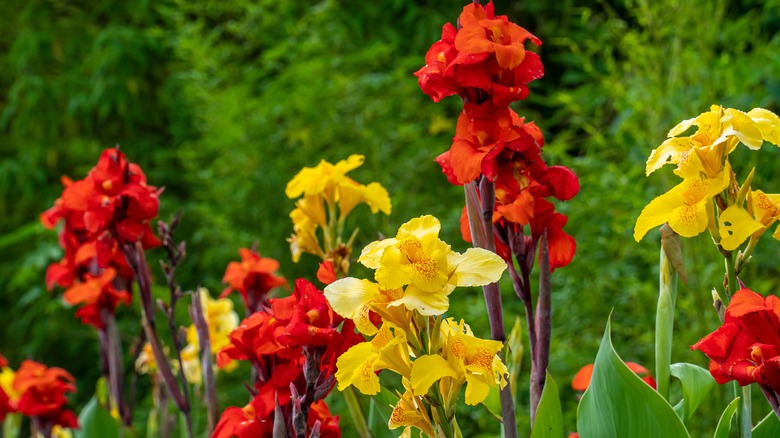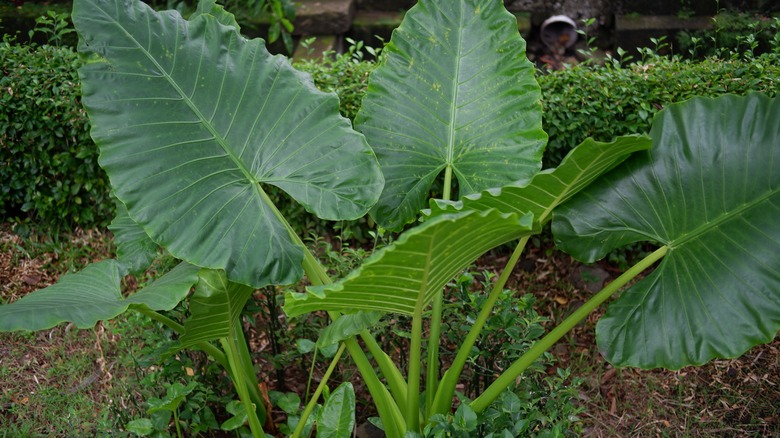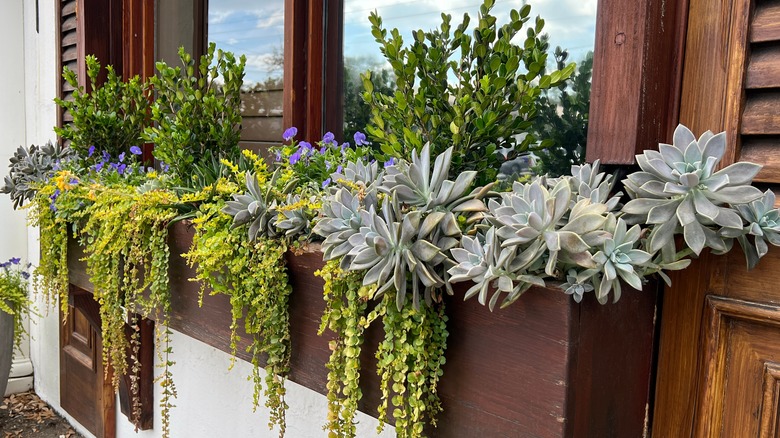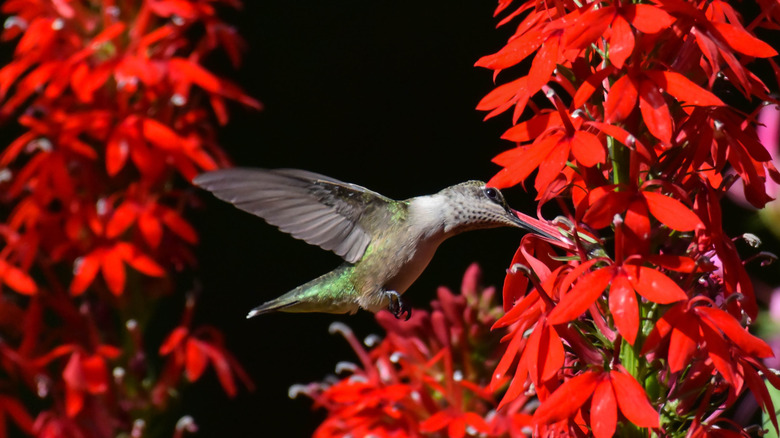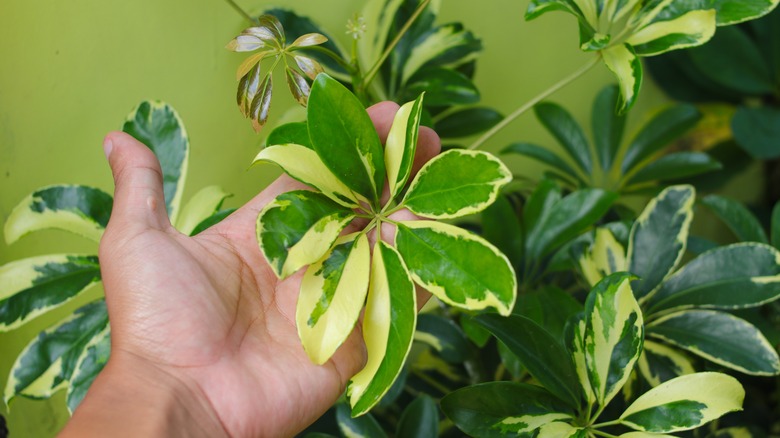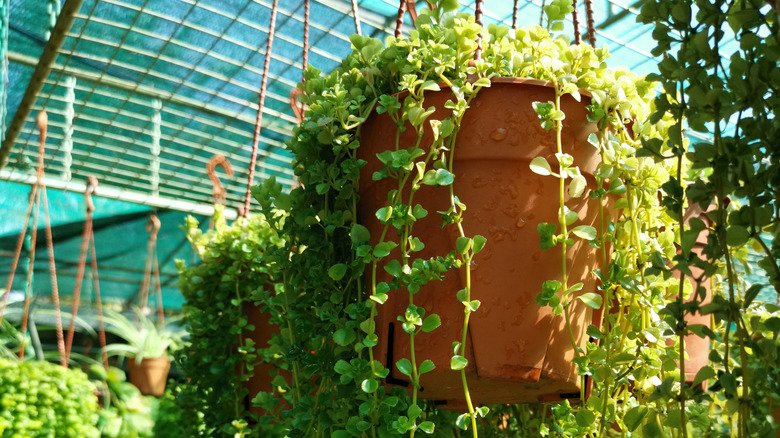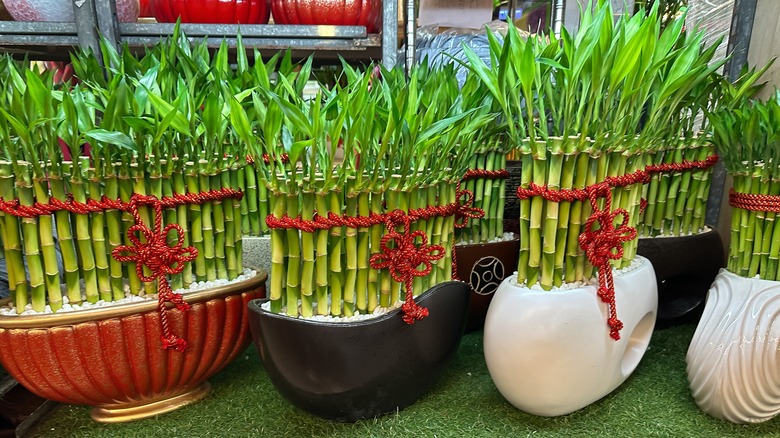The 10 Plants That Won't Thrive When Grown In A Terracotta Pot
Someone cracked the code some millennia ago when they created terracotta. Today, the clay pots remain popular due to their affordability and durability. Terracotta pots are a favorite among gardeners who love their good drainage and porous structure which makes them breathable. Terracotta pots are ideal for plants like cacti, orchids, and succulents. These plants don't appreciate sitting in a pool of water as they are highly susceptible to fungal diseases like root rot. The holes at the bottom of terracotta pots allow for adequate drainage and the porous clay structure means the pot can "breathe" and release humidity.
While this may seem like a great environment where your plant can grow and thrive, not all plants are keen on the dry and cool environment terracotta pots have to offer. Some plants need more consistent moisture and humid conditions that they can't get from terracotta pots. This puts them at risk of dehydration. Some plants are just better off with a different kind of pot or container. We've found 10 such plants, including ferns, lilies, and lucky bamboo, that aren't well-suited for terracotta pots.
Ferns
Ferns are said to be a perfect houseplant despite the maintenance needed for their upkeep. Like other plants that don't favor terracotta, ferns need moist to wet soil and need to be kept in warm and humid conditions. If you're able to meet all their needs, however, ferns reward your home with lush greenery and texture. When grown in the wrong conditions like dry soil and the cooler temperatures a terracotta pot creates, ferns tend to droop and their leaves begin turning yellow which are signs of dehydration and overheating.
Irises
Irises are popular for the colorful element they bring to the home. Irises are suitable plants for beginner gardeners because of how low-maintenance they are. If you know how to care for your irises, they can grow 2 to 3 feet tall with repeating blooms of color. You might think irises could do well in terracotta pots since they need well-draining soil but they actually prefer "wet feet and dry knees". Planting them in a ceramic container and placing them in the sun will avoid excess surface moisture and give them the full 8 hours of sun they need.
Lilies
If you love a dainty and elegant flower, you'll love lilies. Lilies are low-maintenance perennials that come in a wide variety of shades. You can ensure your lilies thrive by giving them 8 hours of sunlight, which will help the soil surface remain dry. While it's not uncommon to see lilies grown in terracotta pots, it's not ideal because, depending on the quality of the pot or how low temperatures might get in your climate, terracotta may crack or break in colder temperatures lilies can survive in. Instead, plant your lilies in plastic containers that have adequate drainage.
Cannas
Yes, you've probably heard of canna lilies before but these aren't true lilies. These dramatic and fanning plants aren't like the more fragile-looking lilies they're usually confused with. They are larger, imposing subtropical perennials that grow in warm orange and red hues. They can be planted in the garden or in patio containers where their large leaves work as a privacy screen or a lovely focal point. Cannas don't thrive in terracotta because they need a lot of moisture. Cannas need frequent or even daily watering to thrive.
Elephant ears
This plant looks just like its name suggests — it has large fanning and flapping ears that will give your home or garden a tropical feel. These plants can do well potted as an indoor plant, but they need adequate warmth and humidity to thrive. Because you need to mimic tropical conditions to keep this plant happy, terracotta pots aren't ideal as their porous surface means your elephant ears can quickly dry out. Consider planting your elephant ears in large glazed ceramic containers for the best results. Other containers like plastic or metal can work well too.
Creeping Jenny
Not to be confused with her invasive older brother, creeping Charlie, creeping Jenny is an adorable and welcome addition to any garden. It wouldn't do well in terracotta pots because it's one of the many flowers that thrive in soggy conditions and is usually used as a feature near ponds or fountains where it can grow very quickly, spreading over the space and giving the rest of your flowers some competition. This flower can be planted in smaller plastic containers so its long vines with tiny round green leaves and yellow flowers spill over like a fountain on your patio.
Cardinal flowers
Cardinal flowers make a statement in any garden or patio space with their tall red and striking stems. The cardinal flower is naturally found near rivers and swamps so it can be expected that this flower thrives in moisture. Terracotta pots will fail to create an environment warm enough for this flower to thrive and will drain it of the moisture it needs to feel at home. These flowers are great if you want to attract hummingbirds to your yard or garden because their sweet smell makes them irresistible to pollinators.
Umbrella plant
You can keep this statement piece indoors, but it can also be planted outside, far from where children and pets might be tempted to play with the large canopy leaves, as they contain an irritant sap that is toxic to humans and pets. The umbrella plant is easy to care for in warm climates and makes for a gorgeous addition that's impossible to ignore even among colorful flowers. Despite the fact that it needs well-drained soil, the umbrella plant needs consistent moisture and humidity. Drier or colder conditions could lead to leaf shedding.
Baby's tears
If you remember the exaggerated fountain of tears you'd see in cartoons growing up, you'll quickly see why this plant was named baby's tears. Similar to creeping Jenny, this plant flows and spills over its container sending tiny green leaves pouring out in thin and adorable vines. Baby's tears grow best in warm and humid conditions with rich, moist soil, so a terracotta pot is not ideal. Unlike creeping Jenny that doesn't bloom for very long, baby's tears remain evergreen in zones 10 and above.
Lucky bamboo
Thought to bring good luck and positive energy into its space, lucky bamboo is a popular housewarming gift because of its use in feng shui. Despite the name, this plant is a tropical water lily, not real bamboo. It makes a subtle statement whether you choose to place it on its own in a brightly lit room or line a few of them up so they can grow to become a living feature wall in your home. Lucky bamboo will be in its element in moist, well-draining soil with warm temperatures and average humidity.
